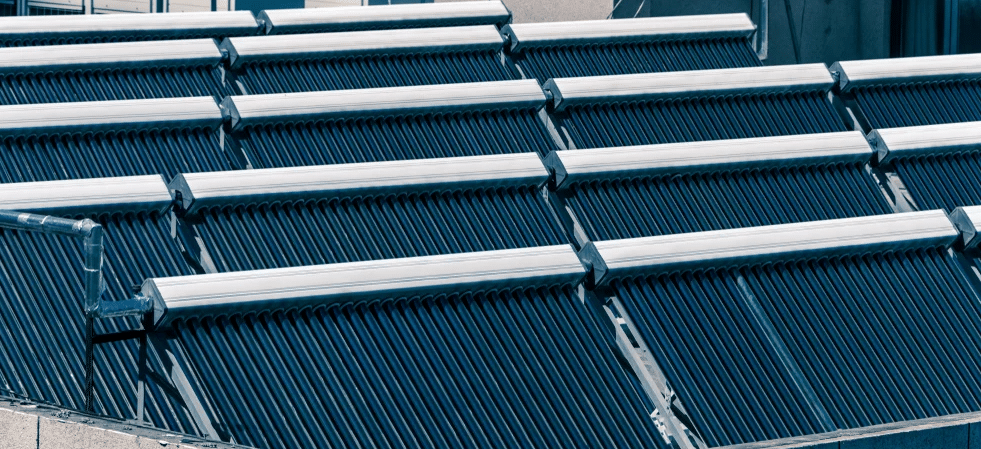Energy consumption is one of the biggest factors considered when it comes to reducing the building expenses. Most energy consumption methods in buildings also have a detrimental effect on the environment. In residential buildings, water heating represents a significant energy expense. Commercial buildings like restaurants, healthcare facilities and hotels also need a lot of hot water. Traditional methods for heating water include combustion and electric resistance. Water heating via combustion method is harmful to the environment due to the amount of emissions, and this can also have a negative impact on environment especially in urban areas. Electric resistance heaters produce no harmful direct emissions, but have a high operation cost.
Solar collectors and heat pumps provide a greener alternative with low cost. Solar collectors use a naturally available resource, sunlight, which is available in abundance. Solar collectors are installed on rooftops or any other high ground places. Heat pump aren’t directly depended on sunlight, since they gather the thermal energy from the outdoor air for heating the water. Like electric resistance heater, heat pumps are also use electricity, but consume a lot less energy (50% of more).
According to the NYC Urban Green Council study, hot water accounts for 10% of the total energy consumption in buildings. For residential multifamily buildings, hot water accounts for 19% of energy consumption. Renewable heating methods can not only lower the environmental footprint of the building sector but also considerably lower the energy bills. This eliminates the impact of harmful emissions on the air quality in cities.
Solar Collectors and Heat Pumps
Solar collectors and heat pumps both benefit for energy savings. The main difference is how these savings are achieved. Let take a look at how they both work and produce energy.
Solar collectors are directly exposed to sunlight. They use an antifreeze solution or a heat transfer fluid to accumulate the thermal energy from sunlight, and then a heater exchanger heats the water without mixing. In tropical regions with hot climate, solar collectors are designed to heat the water directly without needing an intermediate fluid.
Heat pumps gather thermal energy from the outdoor air. Since heat pumps are not depended on direct sunlight, they can work even at night in absence of sunlight. Heat pumps can also be used during winters as they accumulate energy from the outdoor air. However, they are less efficient in winters and also need a defrost cycle to the remove ice from the outdoor units.
Solar collectors and heat pumps are not mutually exclusive of each other and can be deployed together for maximizing energy savings and cost savings. The synergy of these technologies allows to maximize the water heating as solar collectors can heat the water with sunlight, and heat pumps can meet the demands that cannot be covered by solar collectors.
Heat pumps can also be used along with the other renewable energy generating systems. Heat pumps are capable of generating 2kWh to 6kWh of heat for every kWh of electricity consumed. When coupled with other renewable energy systems like solar panels or wind turbines, an energy output of 100kWh can be converted into 200kWh to 600kWh of water heating.
Using Solar collectors and Heat Pumps in New York City
In NYC, according to Local Laws 92 and 94, all new roofs and existing roof extensions with at least 200 sq. ft. require sustainable roofing systems. Currently only solar panels and green roofs are counted as “sustainable roofing system” under the local laws, but areas that are covered by the solar collectors are exempted from the requirement. It is highly recommended to consult to a energy consulting firm for analyzing the requirements and cost savings.
Roof areas used for mechanical equipment, including outdoor units of heat pumps, are also exempt from LL92 and 94. A combination of solar panels, solar collectors and heat pumps does not conflict with the requirements of LL92 and 94.
For occupants with no roof space for solar panels or solar collectors, air source heat pumps are a great option for providing the required energy. These outdoor units can be mounted on the walls.


We are planning to attach a small greenhouse to our new build. I bet these panels would work good in there year round.